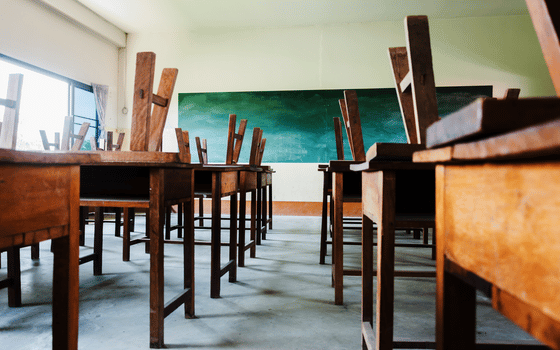-
InsightsClient Story - Industrial Disease Claims - POSTED: January 13 2023
Brachers wins classroom assistant’s ‘low exposure’ mesothelioma claim
- Share this article
- Print this article
-
-
Successful six-figure personal injury claim for client exposed to asbestos.
Brachers’ tenacious personal injury lawyers secured £265,000 in compensation, plus healthcare expenses, for a client diagnosed with asbestos-related disease, mesothelioma. The team refused to give up despite facing challenges identifying the asbestos source.
Jeremy Horton, partner and asbestos disease specialist, acted for a former classroom assistant, WG of Faversham, Kent, in a successful claim for damages for fatal mesothelioma brought against Kent County Council (KCC).
The claim was rejected by a leading asbestos specialist barrister, and the case looked set to collapse when the evidence changed against us. But our thorough research and unwavering persistence established an alternative case which got the client a settlement two weeks before trial for £265,000 damages plus ‘blank cheque’ funding for any future private medical treatment.
Summary of our client’s mesothelioma case
This was a difficult, ‘low exposure’ living mesothelioma asbestos disease claim brought by WG (a widow), who had previously survived breast cancer, successfully treated nine years earlier. She was diagnosed with mesothelioma while she was in her mid-60s and still working for KCC. She had worked for the defendant at three different schools, but mainly at a church primary school (initially as a volunteer) between 1988 and 2006.
WG was initially unsure of how she could have been exposed to asbestos, but using internet images of asbestos materials in schools and with the help of her former colleague, we identified two likely sources of asbestos exposure from a regular task she performed – putting up and taking down displays of children’s work. This involved:
• regularly inserting and removing drawing pins and staples used for classroom displays from what appeared to have been asbestos-based display boards used at the church school (since removed from the school)
• putting up and taking down displays from what appeared to have been asbestos-based ceiling tiles at both the church school and another later school.We obtained supporting expert evidence from the leading asbestos specialist chest physician, Dr Michael Beckles. We also got a preliminary supporting report from the occupational hygienist, Tim Wallis of Pragma. Tim confirmed that on the available evidence, while the client’s asbestos exposure was quite low, it should have been enough to increase her asbestos exposure significantly above common background levels. In our medical expert’s view that was enough to say that her “risk of mesothelioma was materially increased” by her asbestos exposure (the key legal test to link mesothelioma with asbestos).
Even though KCC knew our client was suffering from a terminal illness and despite receiving a full letter of claim, they initially failed to engage with the case at all. Any pre-action disclosure was obtained through Freedom of Information Act requests made of the individual schools. This lack of response meant we had no choice but to promptly start court proceedings, ever conscious that while the client’s mesothelioma was currently in remission the tumour might start aggressively growing again at any time.
The court proceedings and the changing challenges
Unfortunately, the counsel we usually used for such claims turned down this case because of concerns about the risks and difficulties of ‘low exposure’ mesothelioma cases following the (then) recent High Court decision in Bannister.
Therefore, we instructed the top barrister in the country who specialises in difficult, low exposure asbestos claims (especially those involving schools) – Michael Rawlinson KC (QC as was) of 12 King’s Bench Walk. He backed the claim despite its difficulties.
Our client’s evidence was tested at a conference with our barrister and experts. It was concluded that, while the case for asbestos exposure from the display boards still seemed good, the ceiling-tiles were probably not asbestos – so that part of the case was dropped. However, it was identified that our client likely had asbestos exposure from visits to the boiler room at the church school.
Our counsel drafted the court pleadings and proceedings were issued and served on KCC. They still failed to respond and we entered judgment in default. Two months later, KCC woke up and instructed Plexus to represent them. They applied to set aside judgment on the basis of an arguable defence that any asbestos exposure was too low to create a material risk of mesothelioma.
In support, they served a medical report from Dr Chris Stenton, arguing her previous radiotherapy for breast cancer was a more likely cause of her mesothelioma than her asbestos exposure (such radiotherapy has recently been recognised as a rare alternative to asbestos as a cause of mesothelioma). On our barrister’s advice, we agreed to set aside the judgment.
In the meantime, our occupational hygienist advised that the client had probably not been exposed to asbestos from the church school boiler room, but had probably been exposed due to the presence of asbestos insulation board inside convection heaters (still present at the school).
The defendant was given permission for its own medical and occupational hygiene experts and we were allowed to amend our case as per our occupational hygienist’s further advice. The two medical experts discussed the case and mostly just agreed to disagree. Our expert, Dr Beckles, advised that if our client’s earlier radiotherapy had any part to play in her mesothelioma it probably worked in combination with her asbestos exposure (“synergistically”) so that they multiplied the risks and the two could not be separated as causes.
Unfortunately, the evidence then changed in a way that put the whole claim under serious threat. The heaters (initially thought by our expert to contain some asbestos) were tested and found to contain not a single trace. This just left us with the display boards.
Then, the defendant’s occupational hygienist, Martin Dippnall, raised serious doubts whether the display boards were asbestos-based or not. Our own expert conceded it was very possible those boards were not asbestos. There was no way to tell because they were never actually tested in the school’s previous asbestos surveys and had long since been removed.
How we turned this mesothelioma case around
After this, we explored if there was another potential source of asbestos exposure. We went back to a minor source which our expert had previously dismissed as just too tiny – some asbestos-based panels behind two heaters in an infant mobile classroom where the client had worked, not as an employee but as a classroom volunteer, in the late 1980s/early 90s. KCC could not deny they were asbestos because their own surveys said so. However, the panels were in a “fair” condition when inspected in 2004 and presumably would have been in a slightly better condition when our client worked in that classroom some years earlier.
As the panels were less than perfect, there was potential for minor exposure but only if something disturbed them. As they were behind (rather than inside) the heaters, we could not rely on air currents disturbing and circulating fibres. But it seemed to us that a busy classroom of seven-year-olds would likely have caused some direct or indirect disturbance of the panels.
Therefore, we got additional statements on that point; not just from the client but also from her daughter, who had been taught in that classroom for two whole years. These statements were late under the court timetable and, therefore, KCC objected to us being allowed to use them. So we had to convince the High Court Master to let them in late, which thankfully he did.
With those statements in, the two occupational hygienist experts agreed effectively that our client probably would have had minor asbestos exposure from these panels up to four to eight times background levels. That still did not guarantee us success because it was still a very low exposure. But we and our counsel believed it should be enough to save the case and make KCC/their insurers want to settle to avoid what would have been a very bad precedent for insurers in a schools case if we had won – provided we made a reasonable deduction for liability risks. (If we did not make a deduction, it was likely we would have to take the case to trial; an experience the client was dreading and involving a serious risk she would lose and get nothing). From previous experience of ‘low exposure’ cases, we knew insurers would almost certainly not settle until close to trial.
How we achieved a fair result for the client
To maximize the chances and value of any settlement, we had to carefully tune our offer and its timing. We decided it would be best to make the offer four weeks before trial. With counsel, we agreed that a key aspect to our offer, to best ensure our client’s mental and physical health, had to be that the other side would agree to a ‘blank cheque’ to cover in full any future private medical treatment (including immunotherapy) that could help her mesothelioma.
The concessions we would offer, therefore, would only be for the lump sum damages we were requiring them to pay upfront. Counsel had wanted to put forward an offer of £240,000 but we felt that was a bit low (and we pride ourselves on usually getting better results than our counsel recommends!) So we suggested to the client an alternative of £265,115 which she went with. This represented a significant discount for liability arguments; estimated by us at about 35% – the full reasonable value being over £400,000 in our view.
To impose greater pressure on the other side, when making the offer we put it as a ‘Part 36’ offer, meaning if they did not accept it and we matched this figure at trial, they would have to pay our client a 10% win bonus. In addition, we informed them that if they did not accept it by Friday week, on the Monday afterwards we would be taking out top-up After the Event (ATE) insurance cover, which would triple the premium that they would pay if we won. They accepted our offer on the Thursday, just over two weeks before the trial was due to start. This settlement was a great comfort to WG and her daughter, who could rest assured that WG’s care would be properly financed, without the stress and risk of a High Court trial.
Client’s testimonial
Daughter’s testimonial: “I am incredibly grateful for all your hard work, as much as it would have been brilliant to defeat them in court that was far from certain, this is a brilliant outcome compared to quite possibly losing with nothing to help her in the future.”
How can we help you with a mesothelioma claim?
This mesothelioma claim was dealt with by Jeremy Horton, with the valuable help of legal executive, Natalie Marsh, legal assistant, Nicola Todd, and trainee, Cliona Fletcher. Jeremy is a Solicitor and Partner in the firm, specialising in asbestos compensation claims in Kent, Medway, Essex and beyond. Jeremy is passionate about helping asbestos disease victims and their families achieve fair compensation as quickly as possible. He is the only APIL Accredited Occupational and Asbestos Disease Specialist solicitor in Kent, Medway, Essex, Surrey or Sussex. Jeremy can be contacted on 01622 680415.
This content is correct at time of publication
Can we help?
Take a look at our Industrial Disease Claims page for useful information, resources, guidance, details of our team and how we may be able to help you
-
Key contact:
Get in touch
Please fill out the below form or alternatively you can call us on 01622 690691

